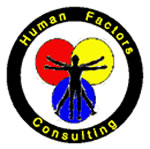Application of Human Factors Engineering in Medical Product Design
By: Andrew D. Le Cocq, BS, MS
Human Factors Consultant
Tel: (800) 588-0008
Email Andrew Le Cocq
Profile on Experts.com.
Advancements in medical instrumentation are often judged on technical factors such as increased accuracy or increased capabilities without regard to the operator, or to the degree of knowledge or training required to make the instrument perform all of the advanced functions for which it was designed. Because patient safety and efficient use of an instrument are ultimately determined by the operator, it is imperative that medical instruments be designed not only with capability and functionality in mind, but with the operator in mind as well. Such operator-oriented product design is accomplished most comprehensively and efficiently by the integration and application of human factors engineering into all phases of the development cycle of medical instrumentation. This paper describes the step-by-step human factors design process with examples from the design of a specific family of intravenous infusion devices.
Introduction
As medical instrumentation has become more complex, there has been a corresponding increase in operational problems for the user. This has become particularly apparent with the proliferation of microprocessor-based medical instruments which have increased product capability and flexibility. While these products offer the potential for more effective clinical therapy, such increased capability and flexibility often have resulted in products which are difficult to use. This, in turn, has limited the effectiveness of these products and increased the inherent possibility for human error.
This paper addresses the discipline of human factors engineering, also called ergonomics, and describes how this discipline can be integrated into the design and development of medical instrumentation. The objective is to produce a product with an effective, efficient, and safe user/product interface. In the following discussion, the development cycle for medical instrumentation will be explored using, as examples, three specific products that were significantly affected by human factors engineering.
Human Factors Engineering Defined
Human factors engineering is the application of scientific knowledge of human capabilities and limitations to the design of systems and equipment to produce products with the most efficient, effective, and safe operation. In addition, human factors engineering is the consideration of the methods and procedures involved in the use of these products and their operating environment.
The human factors techniques used to accomplish these goals identify and address all possible points of interface between the user and the equipment. For most products, the typical interface points include instrument control panels and displays, operating procedures and instructions, the operating environment, and user training requirements. The human factors engineer must include a careful study and analysis of all information required to operate a particular system, the operational characteristics of that system, and the skill levels of the anticipated users. Only then can the human factors analysis assist in the design to achieve the optimum user/product interface.
The Importance of Human Factors Engineering to Medical Instruments
When designing new medical instruments, several criteria must be kept in mind:
- Medical Instrumentation must be easy to use and understand. This is particularly important in a hospital environment where there are three different work shifts per day, possible product use seven days a week, and where the users range widely in their knowledge of the proper use of the product.
- The need for feedback (such as indicators, audible tones, and diagnostic information) which allows the user to determine that the instrument is operating properly is essential.
- The instrument's operating environment must be closely evaluated, defined, and understood. This includes size limitations, compatibility with other equipment, the potential need for portability, and possible patient or visitor tampering which may dictate special considerations during the design process.
Using these criteria, it is obvious that an effective, efficient, safe product cannot be developed without at least some human factors considerations.
. . . Continue to article and footnotes (PDF)
Andrew Le Cocq has over 40 years Human Factors Engineering experience working in industry and as a litigation and design consultant. Mr. Le Cocq has provided Human Factors support for the design and development of complex military, commercial and computer systems as well as consumer products to optimize the man/system or man/product interface.
See Andrew Le Cocq's Profile on Experts.com.
©Copyright - All Rights Reserved
DO NOT REPRODUCE WITHOUT WRITTEN PERMISSION BY AUTHOR.











